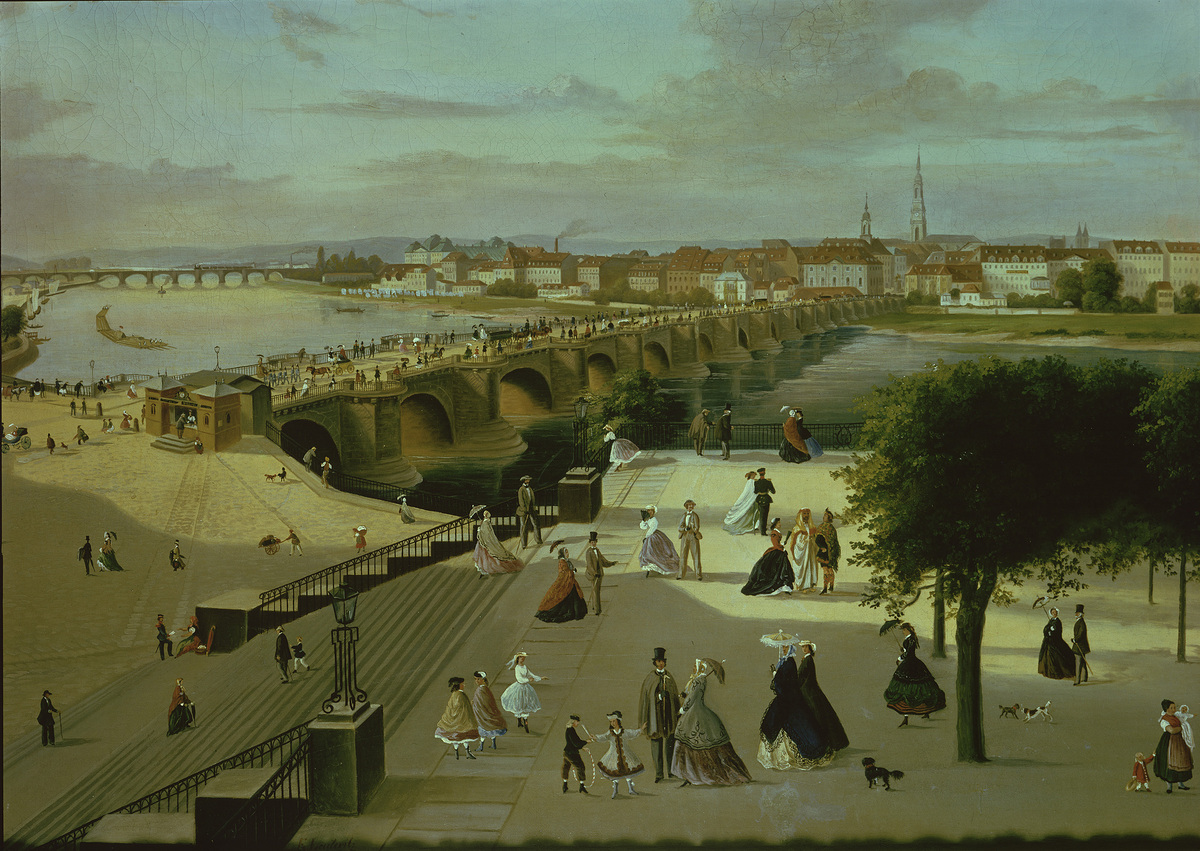Abstract
This painting by Franz Wilhelm Leuteritz (1817–1902) shows members of
Dresden society strolling on the Brühlsche Terrasse, known as “the
balcony of Europe.” Leuteritz’s view includes the Augustus Bridge, one
of the many bridges over the Elbe River. Dresden’s
Neustadt lies in the distance. A
stone bridge had spanned the Elbe at this location as early as 1287. The
bridge pictured here, however, was built between 1727 and 1731 according
to plans by Dresden’s famous Baroque architect Matthäus Daniel
Pöppelmann (1662–1737). At the time of its construction, the bridge
measured 402 meters long by 11 meters wide and was considered one of
Europe’s finest examples of bridge design. Reconstruction in 1907-10
increased its width to 17 meters. The bridge was named after August the
Strong [August der Starke]. During August’s reign as Elector, as
Friedrich August I of Saxony (1673–1733), and finally as August II of
Poland (1697–1733), many of Dresden’s other architectural splendors were
built, including the Zwinger, Schloss Pillnitz, and the Frauenkirche.
The Augustus Bridge was temporarily renamed the Georgi-Dimitroff Bridge
during the German Democratic Republic.
